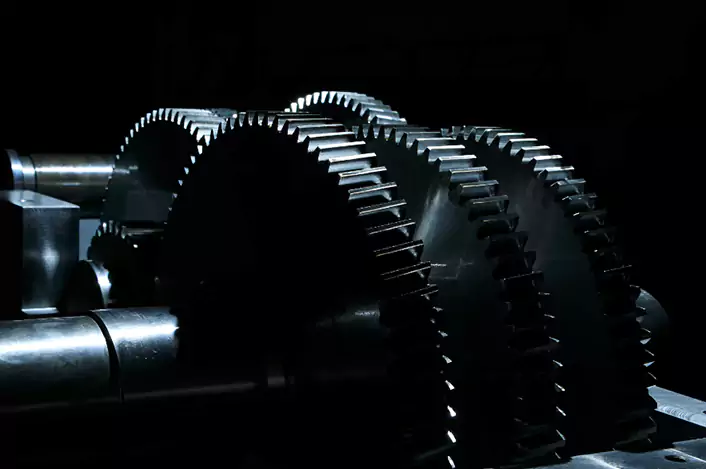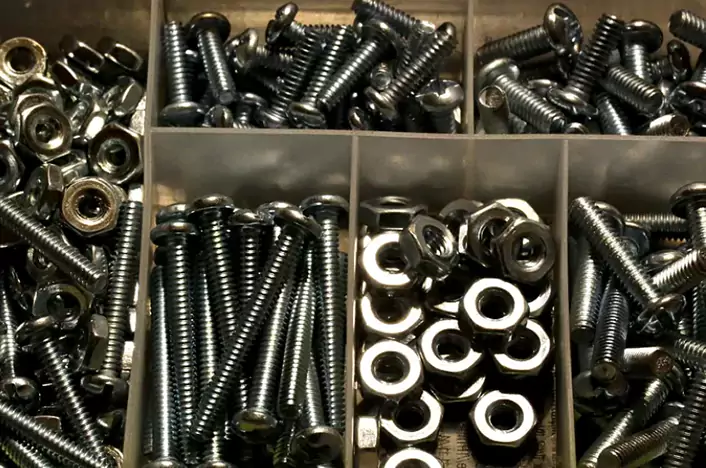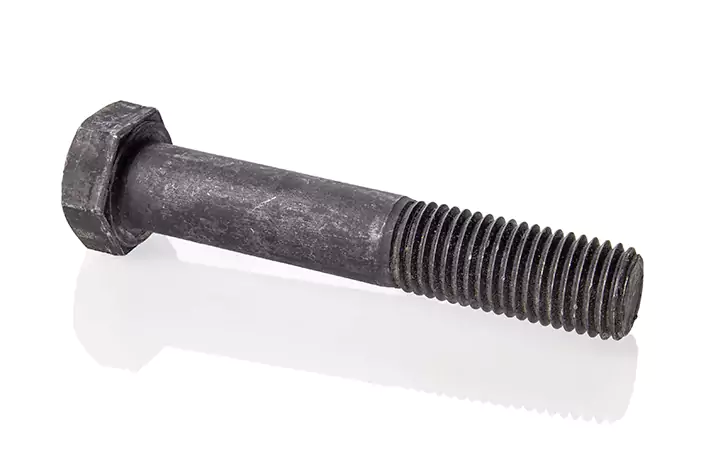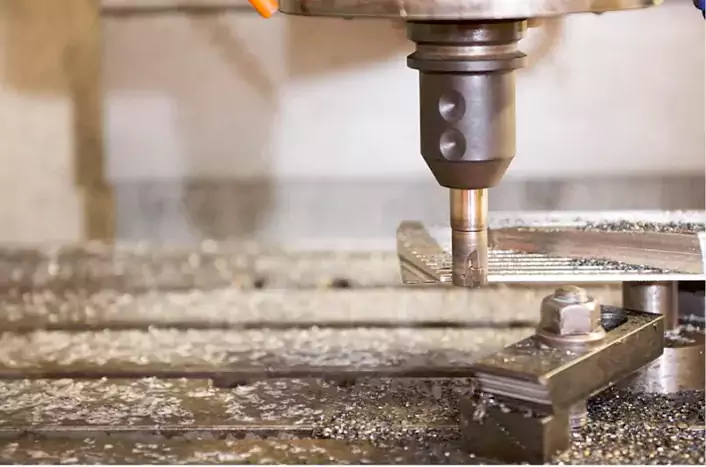Black oxide finish: Popular Surface Treatment for Precision Parts
Precision machining uses different surface finishes to make machined parts last longer and look better. But many finishes have the drawback of making precise machine parts bigger, which can make them less useful by affecting their accuracy and fit.

Luckily, the black oxide coating is different from other metal surface finishes because it doesn’t cause the dimensions to change as much as other finishes do. This article will detail the black oxide coating process, the types of black oxide coating available, their applications, and other important information about this surface finish.
What is it?
Black oxide finish falls under the conversion coating category, which involves a chemical process to create the oxide coating. Its name, “black oxide,” is derived from the fact that it gives a black or matte appearance to the metal surface. The black oxide process includes immersing machined metal parts into an alkaline solution, which then transforms the iron on the surface into magnetite, resulting in a black coating. This black oxide coating method can be used on a number of metals, including stainless steel, copper, zinc, and solder.
What Is The Process?

The process of applying finish involves the following steps:
Cleaning and Preparing the Surface
The metal surface to be treated is cleaned and degreased to remove any contaminants that could interfere with the blackening process.
Rinsing
After the metal part has been immersed in the solution for the desired amount of time, it is rinsed thoroughly with water to remove any excess solution and neutralize the reaction.
Pickling
The ferrous metals are immersed in an acid solution (Ph value 2~4) for further surface cleaning and preparation.
Rinsing again
Immersion in Alkaline Solution
The metal part is immersed in an alkaline solution containing a mixture of nitrates, nitrites, and other compounds that facilitate the oxidation process. The solution reacts with the metal surface, creating a layer of magnetite, which gives the black color.
Rinsing
Dry
This could happen at room temperature or in an oven. Ferrous metals are dried for the next step.
Oil post-treatments
Finally, the material is dumped into the oil or wax which is the coating material. Black oxide coating alone does not give corrosion resistance as good as other surface treatments such as electroplating, or powder coating. Oil treatment is very important to maintain a longer corrosion resistance period.
Types

The process can be carried out at different operating temperatures, which results in various types of black oxide finishes. These types include hot black oxide, mid-temperature black oxide, and cold black oxide.
Hot Black Oxide Finish
This is the most common type, and it is created by immersing the metal part into a hot alkaline solution (around 141°C). The resulting black coating is durable and corrosion-resistant.
Maintaining the appropriate temperature range during the process is crucial. Lower temperatures can prolong the process, while higher temperatures can result in rust formation on the finished part’s surface.
The formation of magnetite (Fe2O3) instead of rust (another iron compound) is achieved through the combination of salts and the elevated temperature of the solution.
In addition to the traditional method of applying hot black oxide coating, there is a less commonly used method that involves using iron (III) chloride. This method only works for steel surfaces, and the machinist dips the steel part repeatedly into an iron (III) chloride bath and then into a hot water bath.
Mid-Temperature Black Oxide Finish
This type of finish is achieved by immersing the metal part in a solution at a temperature range of 90-120°C. The resulting black coating is thinner than the hot black oxide finish and has less corrosion resistance.
Cold Black Oxide Finish
This particular type is commonly referred to as the “room temperature black oxide” process. It doesn’t involve oxide conversion coating. It differs from the other types of black oxide finish methods in that it involves depositing Copper selenide on the metal surface at a temperature range of 68-86°F.
The result is less wear-resistant compared to other types of black oxide coatings. However, after an after-finish is added, it can perform just as well.
Applications

It is popular in various industries due to its minimal dimension extension for precision machined parts and other advantageous properties such as light-absorbent characteristics and wear resistance, despite its low price point. Here are some examples of black oxide finish applications in different industries:
Enhanced corrosion resistance
The black oxide finish provides good corrosion resistance especially after oil or wax is coated, making it ideal for precision machined parts that will be exposed to harsh environments or corrosive substances.
Improved appearance
The black oxide finish gives a sleek, matte black appearance to machined parts that can enhance their overall aesthetic appeal.
Reduced light reflection
It reduces light reflection, making it ideal for precision machined parts that require low reflectivities, such as optical instruments or camera parts.
Increased lubricity
The black oxide finish can increase the lubricity of machined parts, which is beneficial for parts that require smooth operation or movement, such as gears or bearings.
Factors To Consider When Using Black Oxide Finish

When using a black oxide finish, there are several factors to consider to ensure optimal results. Some of these factors include:
Material type
It is suitable for various metal types, but some materials such as aluminum and brass may not be compatible with the process. In industry, this surface finishing process mainly applies to ferrous materials. The alloy content affects the final appearance of the oxide film. For instance, high Mn content ferrous alloy after it appears more red or brown than black.
Part Size and shape
The size and shape of the part will determine the appropriate tank size and equipment needed for the black oxide finish process.
Surface preparation
Proper surface preparation is crucial for a successful black oxide finish. Ensure that the part is free from oils, grease, and other contaminants.
Temperature control
Temperature control is essential for achieving consistent and uniform results. The black oxide finish process requires specific temperature ranges for optimal results.
Post-treatment processes
It along provide mild corrosion resistance, it require post-treatment processes, such as applying a sealant to enhance the finish’s corrosion resistance. The author’s personal experience, ferrous parts with black oxide coating alone would last over half a year before rust becomes obvious. Wax or anti-rust oil after finish can make the same part last for years before observable rust.

Quality control
Regular quality control checks must be conducted to ensure that the finished parts meet the required specifications.
FAQ
What is considered the best type of black oxide coating?
The hot-temperature black oxide coating is generally considered the best due to its high-quality finish, although the process releases caustic fumes, which can be hazardous.
Is black oxide harmful?
Yes, the coating process can be hazardous due to the high temperature and the release of caustic fumes.
What materials are typically used in black oxide treatment?
Materials commonly used in this treatment process include caustic soda and nitrate baths, acid baths, alkaline rinsing solutions, and after-finishes.
Conclusion

In conclusion, CapableMachining thinks black oxide finish is a chemical process that produces a thin layer of magnetite on the surface of metal parts, giving them a black or dark grey color. This finish offers several benefits such as wear resistance, light absorbency, and a low cost. However, it is essential to consider factors such as safety precautions, the type of metal being treated, and the intended use of the finished product before applying a black oxide finish. By taking these factors into account, precision machined projects can benefit greatly from the application.